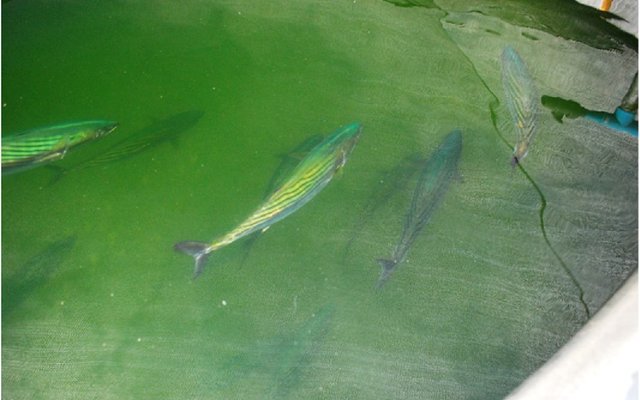South Pacific bonito Sarda chiliensis chiliensis is a marine finfish, commonly known as “small tunas”, with high commercial value at international markets, in part due to worldwide overfishing on other tuna species. South Pacific bonito’s fisheries are following the same wild stocks declination trend.
The species is being considered as a candidate for marine aquaculture in the north of Chile and an international group of researchers performed several studies to determine its feasibility.
Researchers obtained eggs by natural spawning from wild-caught broodstock that were conditioned to captivity for more than one year in a 75 m3 marine land-based aquaculture recirculating system in Chile. The water temperature range in the broodstock RAS during the natural spawns events was between 18.6°C and 19.8°C in December 2012, between 20.4°C and 21.2°C in January 2013, between 21.5°C and 22.4°C in February 2013, and between 21.90°C and 22.87°C in March.
The eggs allowed researchers to describe the characteristics and stages of embryonic development until the hatching stage. Incubators’ water temperature was kept similar to the temperature recorded at the broodstock tank to lessen thermal stress which could affect embryonic development. Thirty-one embryonic stages were characterized in 71.83 h until eggs hatching. Translucent eggs hatched on the third day of incubation, which was comparatively longer than reported for Atlantic bonito Sarda sarda and the eastern Pacific bonito Sarda chiliensis lineolata.
These are the first embryonic development studies conducted with eggs naturally spawned from wild-caught Sarda chiliensis chiliensis. “The successful spawning of wild-caught Sarda chiliensis chiliensis in captivity indicates that controlled reproduction for mass production of larvae can be achieved, allowing the development of hatchery culture technology to a commercial scale without depending on wild fish,” researchers said.
Download the study here.













